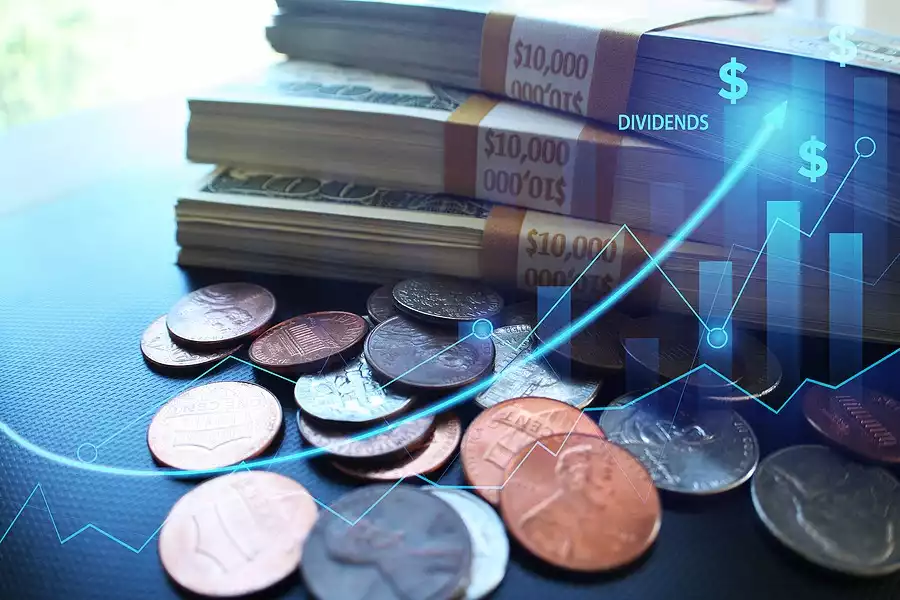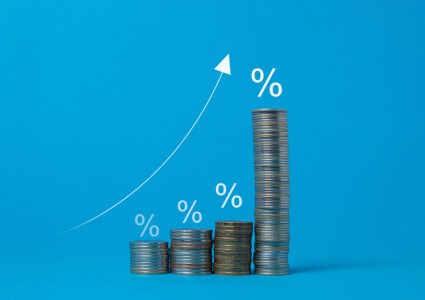The Case for Long-Term Dividend Growth Investing
There are several different strategies that can be used to build wealth that the investor can choose to follow. This can range from owning value stocks to investing in high-growth names.

There are several different strategies that can be used to build wealth that the investor can choose to follow. This can range from owning value stocks to investing in high-growth names.

While each style has their proponents and positives, we believe that the average investor should consider using long-term dividend growth investing as the core of their stock portfolio strategy.
 Takeaways
Takeaways
Why long-term dividend growth is so profitable
How it reduces your risk
The right strategy in the current climate?
The firm's main research and development office is based in Tel Aviv Israel. It originally specialized in Forex and indices spreadbetting and CFDs but has recently expanded in stock trading also. At the time of writing, eToro has 2.2 out of 5 star on Trust pilot. The comments suggest that the platform offers some impressive features but withdrawing money can be difficult. Having said that, some of the negative reviews appear to be rants rather than constructive criticism. This can be examples of traders losing money through their own recklessness rather than eToro's fault. You should therefore take this reviews with a pinch of salt. OANDA is a global financial services company providing advanced currency solutions to both retail and corporate clients all over the world. In this article, we are going to review this broker’s trading options, tools, platforms, spreads, commissions, security measures, and educational resources to help traders make the right choice. AvaTrade offers a wide variety of trading solutions (spread trading, CFDs, and social trading), and peace of mind with its comprehensive regulation, covering the EU, Australia, Canada and South Africa. Clients can use a variety of platforms for discretionary and automated trading.![]() Best Award Winning Brokers
Best Award Winning Brokers
Markets continued to make new highs last year as the combination of government stimulus, the reopening of the economy following the worst of the Covid-19 pandemic, and central banks monetary policy that maintained very accommodative fiscal policy.
The economic backdrop has changed drastically since. Inflation has reached levels not seen in more than four decades as demand for products and services has far outpaced supply. Much of this is due to supply chain issues, but raw material costs are significantly higher compared to the prior year.
The Russian invasion of Ukraine has also impacted markets and the costs of products. For example, Ukraine typically exports 80 million metric tons of grains annually. Due to the war, the country's is projected to see its harvest fall to 40 million metric tons.
A resurgence of Covid-19 in China has sparked strict government shutdowns in an effort to control the spread of the virus and its variants. This has led to a decrease in factory output, impacting businesses of all types.
Finally, the Federal Reserve indicated at the beginning of the year that it would raise the federal funds rate by as many as 7 times in 2022. Recently, it was announced that the next three interest rates would be 50 basis points as opposed to the prior 25 basis point increases as the Fed tries to tame inflation. Aggressive interest rate hikes could choke off growth.
In short, investors have many reasons to worry and little incentive to purchase riskier assets such as stocks.
As a result, the S&P 500 Index has fallen almost 17% thus far in 2022. Last week, the index was off more than 20% from its 52-week high, edging the market briefly into bear market territory. Most portfolios are probably down from the year, with some likely suffering even deeper losses than those that hold just index funds.
The steep decline in portfolio values cannot be completely offset by dividends alone. Dividends can, however, reduce the impact both on the portfolio value and the investor's psyche in several ways.
First, portfolios that have little to no dividend paying positions are receiving limited income from their investments. A portfolio focused on high growth, non-dividend paying stocks is feeling the full brunt of the decline. If they maintain their positions for the full year, then they will have endured the entirety of the loss.
For those with a solid, but not risky dividend yield, of say 2.5% to 3%, a full year investment where the portfolio falls 20% is not a 20% decrease. A portfolio with a 3% yield would lose just 17%. In this scenario the dividend income received would help offset the overall decrease in value at least partially. This is before any of the stocks held received a dividend increase. More dividend income would mean more of the loss that would be offset.
With share prices falling nearly across the board, it is not difficult to build a basket of high-quality stocks providing high yields. 3M Company (MMM), AbbVie, Inc. (ABBV), and Altria Group Inc. (MO) are all yielding close to 4% or higher. Coca-Cola (KO), Johnson & Johnson (JNJ), PepsiCo Inc. (PEP), and Procter & Gamble Company (PG) all yield at least 2.5%. All of these companies have at least 25 consecutive years of dividend growth, with many growing their distributions for more than 50 or 60 years.

Paying and raising a dividend is a commitment from the company to shareholders. Raising a dividend in prosperous times is one thing, but increasing payments under recessionary conditions is extremely difficult to do.
Companies with long track records of dividend growth, such as the ones just discussed, have entrenched leadership positions in their respective industries. These companies have shown they are able to navigate economic downturns without substantial declines in the business. Dividend growth during a recession, takes a strong business model and a secure financial position. Owning strength, especially when the market sinks, can help minimize the losses.
At the same time, the dividends an investor receives can be used to purchase new shares of a company at what is now a lower price. For example, company ABC was trading at $100 and paying a $2.50 annualized dividend. At this price, 100 shares of this company would produce $250 in dividends to purchase 2.5 shares. That same stock drops 20% and is now trading at $80 a share. The dividend remains the same, but can now purchase 3.1 shares. The value of the position in ABC is lower, but the investor is now buying more shares of a company.
More shares mean more income. The 3.1 shares provide $7.75 of annual income while the 2.5 was paying $6.25. The difference starts off small, but extrapolate this improvement in annual income across the entire portfolio and the increase becomes much more significant.
Long-term dividend growth strategy can help create a portfolio that produces enough income to fund retirement. The long-held Wall Street view is that investors need to withdraw 4% of their portfolio annually in order to cover expenses in retirement.
This strategy can be effective when markets are making new highs. It can also be disastrous if followed by a recession and the value of investments declines accordingly. If an investor needs $40,000 each year from their investments, then they need a portfolio balance of at least $1 million. If a downturn occurs and the portfolio value is now $800,000, but income needs remain the same, the investor now needs to withdraw 5% of their total portfolio to cover expenses.
On the other hand, if an investor builds a portfolio that yields 3% then they only require to sell 1% of their $1 million portfolio value to cover expenses. Here is where dividend growth investing really works out in the investor's favor. If the portfolio value increases to the point where the yield now falls to 2.75%, the investor has a larger base from with which to draw from without dropping below the million dollar level.
If the value of investments falls, the yield on the portfolio will likely move higher. For example, A 20% decline in a $1 million portfolio producing $30,000 of dividends results in a portfolio yield of nearly 3.8%. In this case, the investor could tighten their belt somewhat and not have to touch the principal or withdraw just a small amount to make up for the shortfall. A loss is only a loss if the stock is sold. Having to sell less when the portfolio is down can prevent too much of the portfolio having to be jettisoned.
Specifically, we would suggest that investors focus on owning high-quality dividend paying stocks such as the Dividend Aristocrats, which are those S&P 500 names that have at least 25 consecutive years of raising distributions. Making names like these the center of the investment strategy means owning the largest U.S. companies that have also raised their dividend through multiple economic downturns.
No investment strategy is without risks. Dividend paying companies can decide to cut or eliminate their distributions altogether. This is especially true of stocks with double-digit yields.
There are numerous benefits to choosing a long-term dividend growth investment strategy. These include a less negative impact during downturns and the ability to purchase new shares. You also have the possibility of not having to touch the principal during retirement. This can provide much needed reassurance to an investor, especially when the market falls.

